




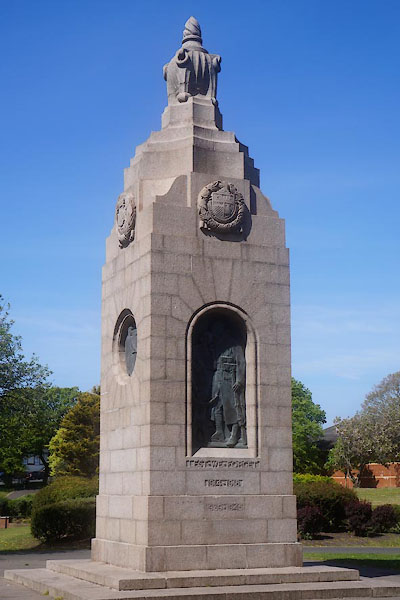
CGB49.jpg (taken 10.5.2017)
placename:- Workington War Memorial Cenotaph
courtesy of English Heritage
"WORKINGTON WAR MEMORIAL CENOTAPH / / VULCANS PARK / WORKINGTON / ALLERDALE / CUMBRIA / II / 502336 / NX9995628499"
courtesy of English Heritage
"A war memorial cenotaph of 1928 designed by the architect Sir Robert Stodart Lorimer, KBE, ARA, RSA, with bronze panels by Alex Carrick, ARSA."
"MATERIALS: Shap pink granite with bronze panels."
"EXTERIOR: The war memorial cenotaph measures approximately 30 feet (9.1m) high and stands on a two-stepped flagged-stone base. Each face has a bronze panel inserted into an alcove. Two of the alcoves are large and round-headed while the other two are smaller and circular. The cenotaph's front south east face displays bronze lettering below the alcove reading 'LEST WE FORGET / 1914 - 1918 / 1939 - 1945'. The bronze panel above depicts a soldier bidding farewell to his wife and child. The rear north west face contains a bronze panel depicting a soldier carrying a wounded comrade. Bronze panels on the two side faces depict the two principle industries of Workington and district at the time of the cenotaph's construction; steel making and mining. On the upper part of the cenotaph, in the centre of all four sides, are carved the Coat- of Arms of the County, the Borough, the Border Regiment, and the Royal Artillery. Above the carvings the cenotaph reduces in width and depth and is terminated by a lamp formed in pink granite."
"HISTORY: Workington war memorial cenotaph was built at a cost of L30,000 partly raised through public subscription with the remainder being paid by Workington Borough Council. The architect was Sir Robert Stodart Lorimer KBE, ARA, RSA, and all the bronze panels are the work of Alex Carrick, ARSA. It was unveiled on the 24th June, 1928, by Mrs. Catherine Ann Henderson, a local resident, who lost four sons, a brother and a nephew in the First World War, and a dedication ceremony was performed at the same time by The Lord Bishop Of Carlisle. Lord Lonsdale handed to the Mayor of Workington a plain lead casket inside of which was the Roll of Sacrifice containing the names of 554 gallant men of Workington who died during the First World War. The casket was placed in a receptacle set in the rear of the cenotaph and the aperture was immediately sealed. The names of a further 170 gallant men who lost their lives during the Second World War was also placed inside the cenotaph during the 1950's."
"SOURCES:"
"Letter from Peter Hayes, Workington Town Clerk."
"SUMMARY OF IMPORTANCE: War memorials of the First World War are an important reminder of nationally and internationally significant events which had a tragic input on local communities. The Workington war memorial is an extremely well executed example of a First World War memorial cenotaph with second World War insertions of a good quality design."
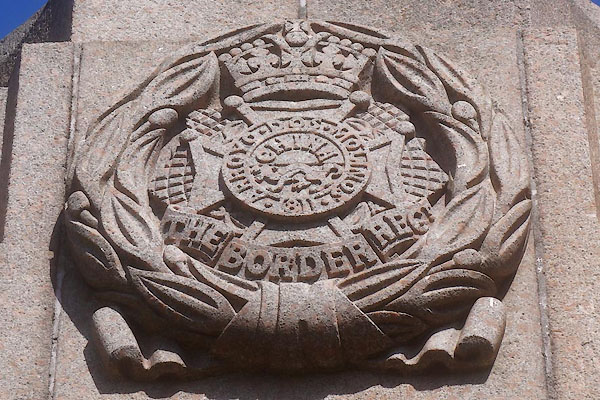
CGB50.jpg Badge, Border Regiment.
(taken 10.5.2017)
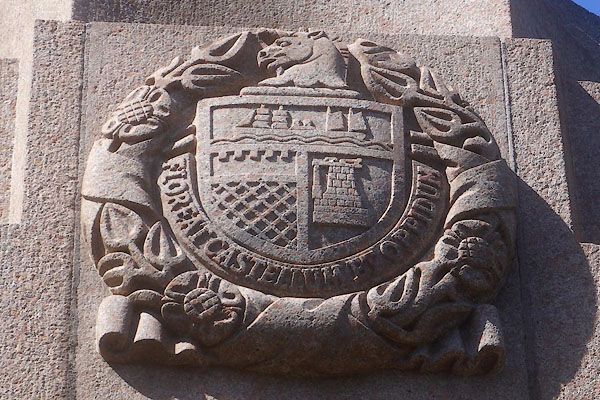
CGB51.jpg Coat of arms, Workington?
"FLOREAT CASTELLUM ET OPPIDUM" (taken 10.5.2017)
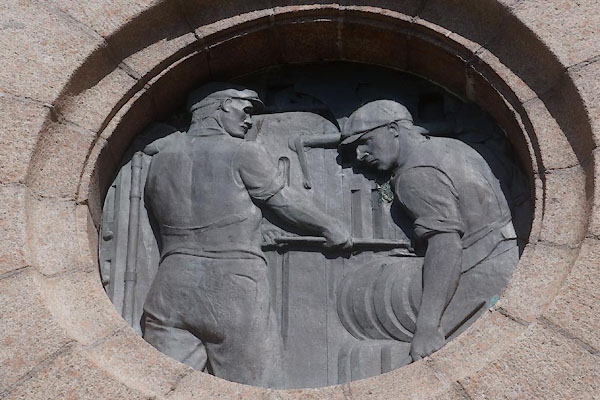
CGB52.jpg Reserved occupation, iron workers.
(taken 10.5.2017)
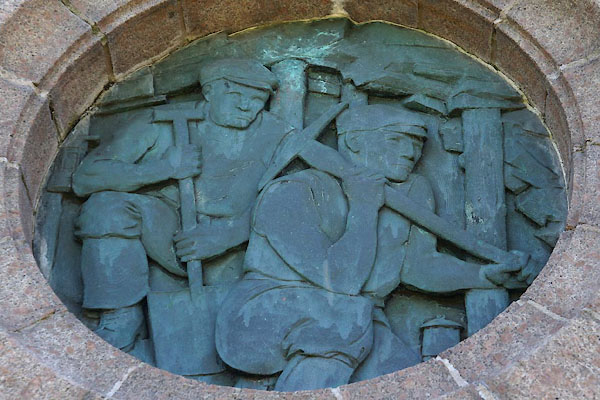
CGB53.jpg Reserved occupation, miners.
(taken 10.5.2017)
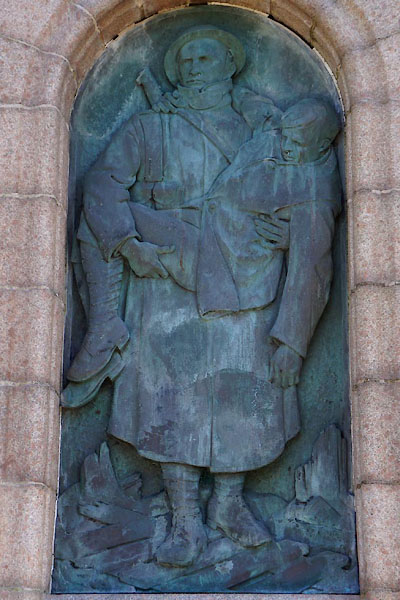
CGB54.jpg Reserved occupation, fireman.
(taken 10.5.2017)

 Lakes Guides menu.
Lakes Guides menu.